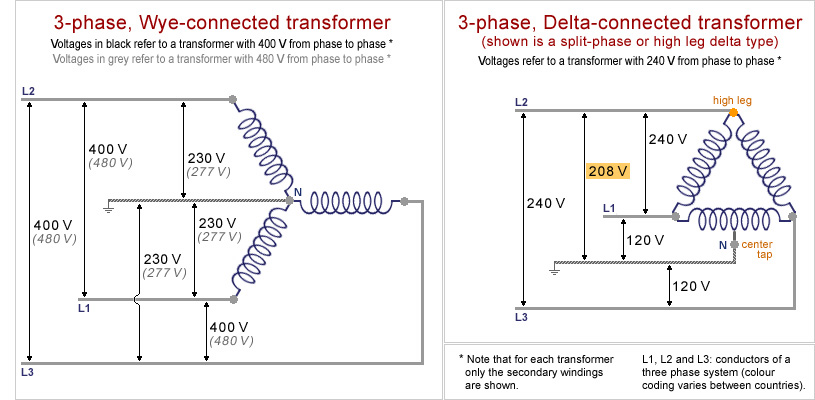Single-Phase, 3-Phase, and Split-Phase Explained (Podcast)

In this podcast episode, we discuss power distribution and some practical tips about three-phase, single-phase, and split-phase power.
The power company generates three-phase power; a power pole transformer typically has three current-carrying conductors. Each phase of power runs at 60 Hz and generates a sine wave. That sine wave peaks and valleys in a wavy formation. Power is generated in a rotating magnetic field, so it is helpful to think of a sine wave as a variation of a circle.
Transformers take high voltage and bring it down to 120V split-phase via a winding on the left, a winding on the right, and a neutral tap. The split sine waves are exactly 180 degrees out of phase; they are direct opposites, and they will intersect and both be “off” at the same time. The center is neutral. This 120V split-phase power results in 240V total; therefore, we can use them in 240V applications. Split single-phase motors require a capacitor.
Three-phase power uses all three legs of power, and the sine waves are 120 degrees out of phase with each other. In three-phase power, only one wave will be “off” at any point in time. Three-phase power is a more efficient means of running motors; split single-phase power is relatively inefficient and requires a capacitor. However, reverse-phasing is a possibility and may run motors backward, causing damage. The most common type of three-phase transformer uses the wye configuration and works for 208V applications.
Bryan also discusses:
- Wye vs. delta configuration
- Delta configuration high leg
- Start assistance and capacitors
- Residential vs. commercial applications
- Capacitor failure
- 277V and 480V applications
- Replacing single-phase with three-phase power or vice versa
- Three-phase condensers with single-phase air handlers
If you have an iPhone, subscribe to the podcast HERE, and if you have an Android phone, subscribe HERE.
Author:









Comments
To leave a comment, you need to log in.
Log In